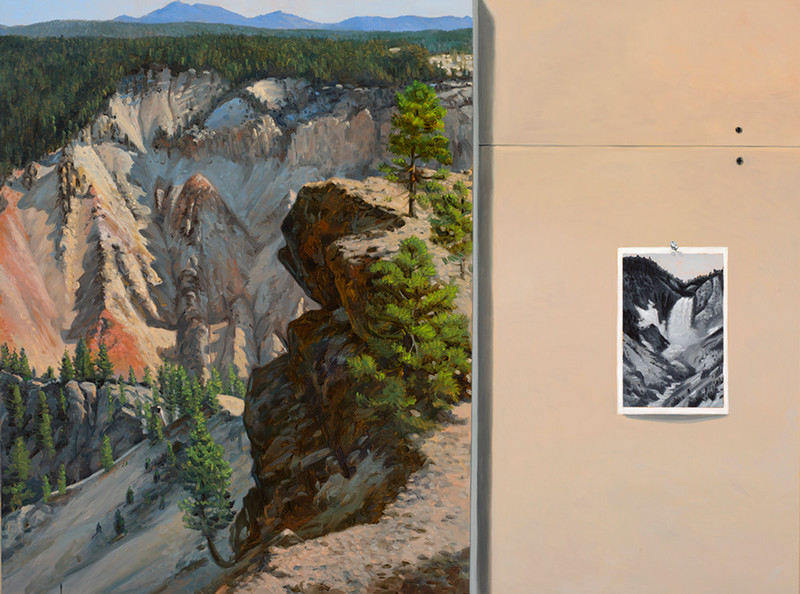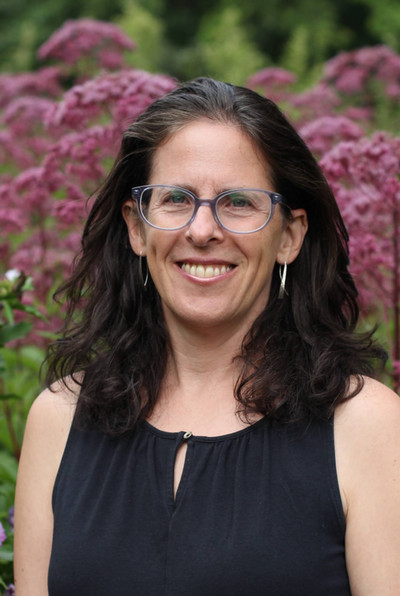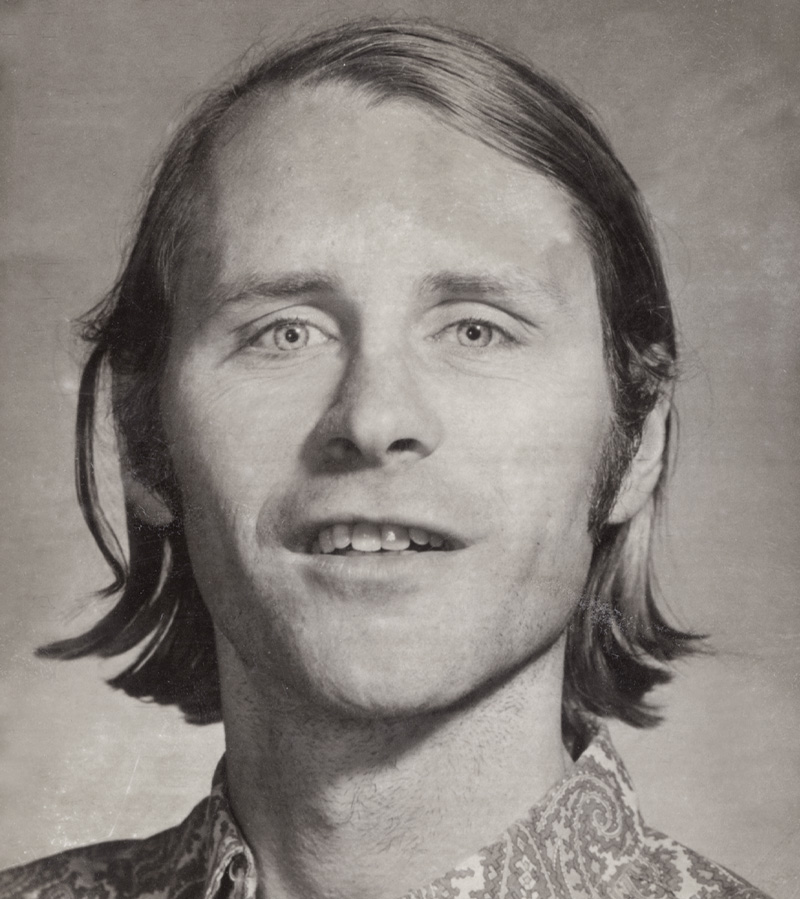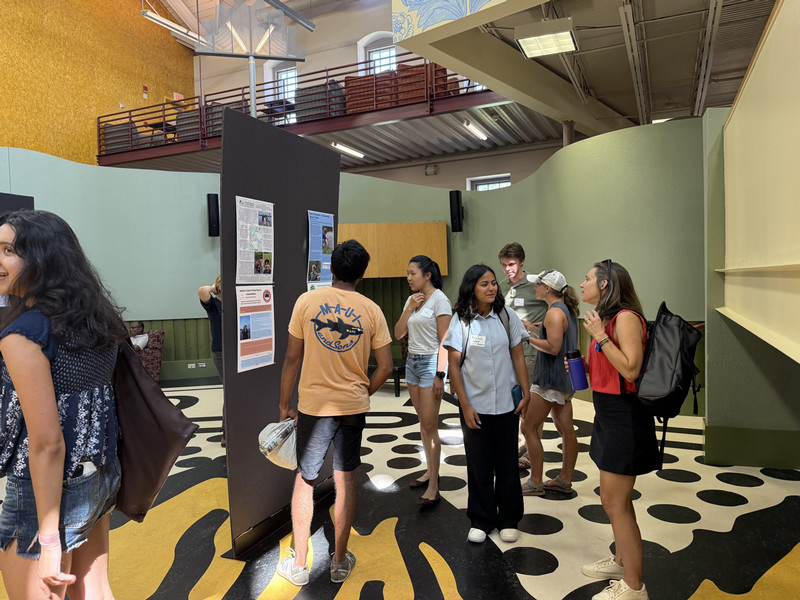Prof. Chong: The Math Behind iPhone Energy Harvesters, Wall Sound Filters and Origami
By Rebecca Goldfine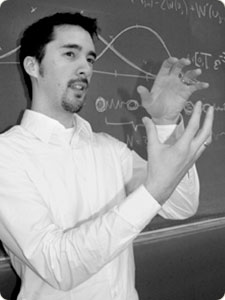
Assistant Professor of Mathematics Christopher Chong works on math that might one day lead to walls that filter out traffic noise but let in birdsong, gigantic underground coils that protect cities from earthquakes, and iPhones that can be charged by walking around with them.
Chong, who started teaching at Bowdoin this fall, is an applied mathematician who is exploring these futuristic inventions by focusing his research on waves, in particular nonlinear waves. “Waves are all around us,” Chong said at a recent lunchtime talk for Bowdoin faculty. “They are sometimes very nice and sometimes they are not so nice.” The nice ones include the music of a cello, and moonlight shimmering on the ocean. The less nice ones include seismic and rouge waves.
Nonlinear waves are quite different from linear waves, a difference that for Chong comes down to their underlying mathematical properties. For non-mathematicians, the difference might be understood by comparing the regular undulations of the ocean that allow a resting duck to rise and fall without moving forward, versus a tsunami, which carries a massive body of water across the ocean. The first is a linear wave; the second is nonlinear.
Chong is studying nonlinear waves to creatively tackle difficult problems, ones that will take years, if not decades, to solve. Nonlinearity is useful, he said, “because it gives you another degree of power if you’re trying to manipulate these waves.” As an applied mathematician, he works with engineers and scientists who exploit mathematical theories to develop real world applications.
While Apple might one day pay big bucks for the technology that would allow us to charge phones by walking, and Home Depot would probably love to get its hands on passive wall filters, Chong said that intellectual curiosity is what drives his research. As a scientist in an academic setting, “If you’re doing research that you can turn around and use to market a product the next year, then the problems you’re looking at are not the right ones” he said. “We have to aim high, think about problems that have an arc of 10, 15, 20 years, and use ideas that are very fundamental and somehow crazy enough that no company would [in the early days of research at least] find the funding to support them.”
The following are brief descriptions of some of the projects Chong is working on with colleagues at both ETH Zurich and the University of Washington:
Vibrations: Energy Harvesting (with A. Foehr, M, Serra Garcia and C. Daraio, ETH Zurich)
“Vibrations are everywhere,” Chong said. “Even tiny ones that don’t bother us, from air conditioners, microwaves, your computer. They’re all vibrating all the time.” We also make vibrations when we move. Chong and his collaborators are working on how to convert mechanical vibrations, even the uneven and unpredictable ones caused by human motion, into electrical energy. “You can imagine someone walking around and you have an iPhone you want to charge, and just by the vibrations of walking, you can, in principle, charge the iPhone,” he said. However, the more irregular the vibration, the harder it is to efficiently convert that vibration into electrical energy. “This is why self-charging iPhones do not exist,” Chong said. “This aspect is one major open problem in the field of energy harvesting.”
Earthquake-proof cities (with A. Palermo, S Kroedel, and C. Daraio, ETH Zurich) To protect cities from an earthquake’s devastation, researchers are investigating how to manipulate the ground around cities to block the most destructive seismic waves. Some materials can block specific wave frequencies; Chong refers to these as “forbidden frequencies.” If soil is manipulated the right way, it could stop an earthquake’s most powerful waves from reaching a densely populated area. One possibility involves drilling big holes, like five meters or so, into the earth in a honeycomb pattern outside a city. Inside each hole would be an enormous spring, called a resonator. This configuration holds promise for blocking forceful seismic waves, preventing them from toppling buildings. “This is taking a classical idea of the theory of waves and implementing it for a very practical application,” Chong said.
To protect cities from an earthquake’s devastation, researchers are investigating how to manipulate the ground around cities to block the most destructive seismic waves. Some materials can block specific wave frequencies; Chong refers to these as “forbidden frequencies.” If soil is manipulated the right way, it could stop an earthquake’s most powerful waves from reaching a densely populated area. One possibility involves drilling big holes, like five meters or so, into the earth in a honeycomb pattern outside a city. Inside each hole would be an enormous spring, called a resonator. This configuration holds promise for blocking forceful seismic waves, preventing them from toppling buildings. “This is taking a classical idea of the theory of waves and implementing it for a very practical application,” Chong said.
Sound Filters (with M. Moleron and C. Daraio, ETH Zurich)
Chong and his collaborators are also working on how to construct materials that filter out unpleasant noises but let peaceful ones in, such as the sound of leaves rustling or a chickadee singing. “We want to filter waves with large amplitudes but let in waves with small amplitudes,” he explained. A possible solution is to create a wall membrane made from a material that is similar to a drum head, but has the property of being nonlinear. One important property of a nonlinear material is that the response depends on amplitude. For example, the membrane will respond to a low amplitude sound wave (birds chirping) differently than a large amplitude sound wave (car horns). The goal is to engineer the material so that high amplitude waves are filtered out.
Waves in Origami ((with H. Yasuda, E. G. Charalampidis, P.G. Kevrekidis and J. Yang)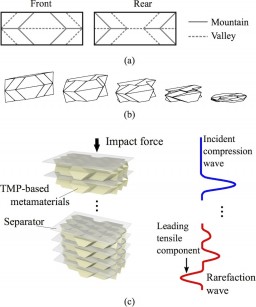 The intricate folded paper of origami has captured Chong’s imagination. By folding a piece of paper into a little unit, and repeating that unit, he can create an interesting shape that affects waves in an unusual way. Squeezing this structure makes “interesting wave dynamics that you typically don’t observe,” Chong said. “They’re the opposite of a pressure wave, like a sound wave when everything is pressed together. Instead, it’s like the parting sea, you have stuff moving and traveling away.”
The intricate folded paper of origami has captured Chong’s imagination. By folding a piece of paper into a little unit, and repeating that unit, he can create an interesting shape that affects waves in an unusual way. Squeezing this structure makes “interesting wave dynamics that you typically don’t observe,” Chong said. “They’re the opposite of a pressure wave, like a sound wave when everything is pressed together. Instead, it’s like the parting sea, you have stuff moving and traveling away.”
While there may be practical applications to studying the mathematics of origami, such as coming up with compact, foldable solar cells that can be deployed in outer space, Chong is motivated by different reasons. “When I’m thinking about the origami project, I’m not excited about applications,” he said. “I’m excited about taking an art form and looking at the mathematics behind it.”
